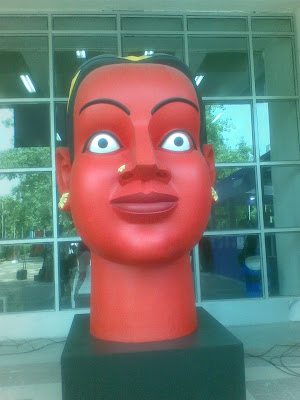(By Nalini S Malaviya)
A recent report on the state of the stock market highlighted that the Sensex was climbing up in the last couple of months based on the fact that a few stocks were performing exceptionally well. A similar trend is seen in the art market, too. In the past, when prices of certain artists shot through the roof it not only created a wider market for art, but riding on this wave most of the other artists, too, hiked up their rates. And, in fact, a majority of them succeeded to a large extent. It was seen that anything related to art was on a high during that period.
However, as an investor it is important to realize that not every painting or sculpture will fetch the same returns. Incidentally, a few years ago, students and new artists were able to price their works beginning at Rs. 5,000. But soon after, the starting prices were close to Rs. 20,000. In a way, the base price itself has gone up considerably.
One question that has always emerged is that how does one evaluate whether a work of art is actually worth the quoted price. Apart from logical factors such as rarity and quality of the work, historical value, the artist’s name and its worth from a collector’s point of view, one finds that pricing is predominantly driven by demand, or, its perceived investment value.
In that respect, claims that were rampant a few years ago regarding appreciation in investment potential of art were not entirely true. Not every painting or artwork fetched the same amount of projected returns. In fact, a very small percentage of artists saw a large appreciation in price. Now that interest in art is once again rising, it helps collectors and investors to be aware of these points. Just as one invests in stocks after a lot of research, one must do the same to invest in the right kind of art. But, in case money is not a criterion, and one is not looking for a financial investment, then obviously one can just go and buy anything that is appealing.
(Published in Financial Times)




 amongst others. Beginning from the foyer, installations by some of the best known names in the art business were placed strategically at various locations throughout the exhibit area. These were specially created for the summit as part of the Purple Wall Project curated by Gayatri Sinha. Installations by Subodh Gupta, Nataraj Sharma, Riyas Komu, Manjunath Kamath, T. V. Santosh and Subba Ghosh were some of the exhibits that were on display.
amongst others. Beginning from the foyer, installations by some of the best known names in the art business were placed strategically at various locations throughout the exhibit area. These were specially created for the summit as part of the Purple Wall Project curated by Gayatri Sinha. Installations by Subodh Gupta, Nataraj Sharma, Riyas Komu, Manjunath Kamath, T. V. Santosh and Subba Ghosh were some of the exhibits that were on display.

